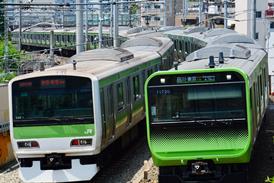Close menu
- Home
-
News
- Back to parent navigation item
- News
- Traction and rolling stock
- Passenger
- High speed
- Freight
- Infrastructure
- Policy
- Technology
- Ticketing
- Business
- Research, training and skills
- Accessibility and inclusion
- People
- Urban rail news
- Suburban and commuter rail
- Metro
- Light rail and tram
- Monorail and peoplemover
- Regions
- InnoTrans
- In depth
- Events
- Data
- Maps
- Tenders & Jobs
- Sponsored content
- Insights
Strategic analysis targets high speed rail decision-makers
By Railway Gazette International2014-01-21T14:06:00

EUROPE: An economic study published on January 21 aims to help determine how best to expand the current European high speed network.
Already have an account? LOG IN
To continue…
You’ve reached your limit of content for the month














